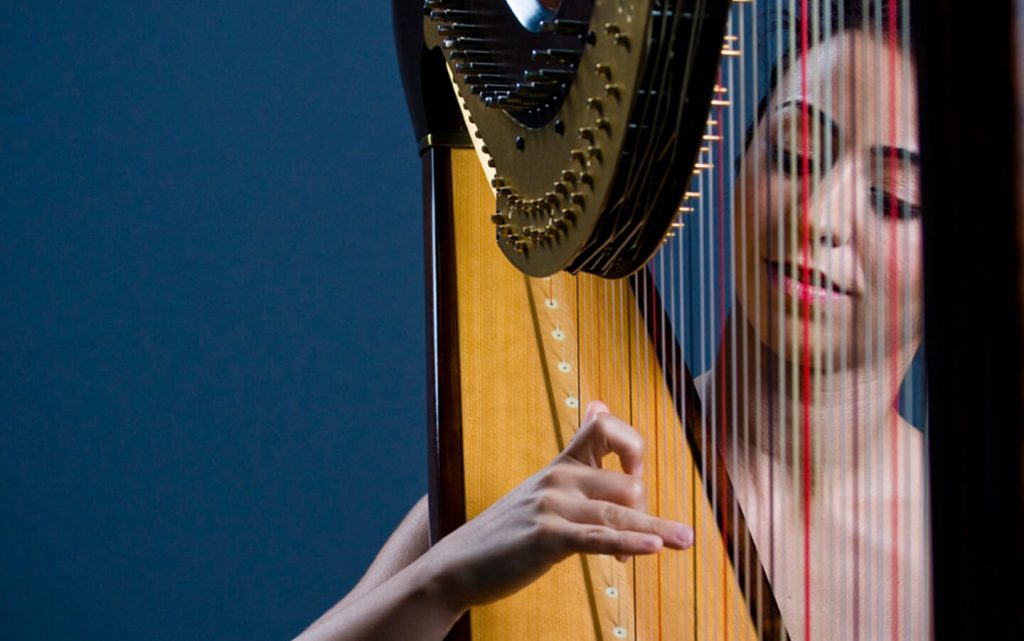Harp is one of the oldest musical instruments in the world with the name of the player called the harpist. Where was the earliest musical instrument developed from a crossbow for hunting.
Many of the frescoes on ancient Egyptian tombs made in 3000 BC show images of instruments similar to hunter’s bows, without poles like those found in modern harps. Harp which is played in an oblique position and has elbows coming to Egypt from Asia around 1500 BC, this instrument is made from hollow boxes or boxes that are fitted with strings (strings) straight at the corners so that they can produce sound when picked.
At that time, maybe the string used is made of hair or plant fibres that are tied to the ends of the box. Strings can be adjusted by twisting the knot that was made before. During medieval times, pillars or support poles were added to increase extra tension on the string. Rigid rope materials such as those made of copper and brass are used in this change, allowing the instrument to have a higher sound volume and the resulting tone produce a sustaining effect.
The harp did not initially have a mechanical device that gave the player a combination in different key forms, the harpist (harp player) felt the need to adjust the tone of their strings and arranged in each section. Finally, in the second half of the 17th century, a row of metal hooks was attached along the left side of the harp. The initial depiction of a harp using a frame or frame is in England in the 8th century stone age transition. Where music is an important part of the life of the ancient Irish people and the harp is an aristocratic instrument, commonly played in royal courts. Shortly before 1720, the mechanism for the use of expanded harps was fulfilled for the harpists to fulfil their needs in playing it. Seven pedals were added to the bottom of the harp to increase pitch. For example, if the harp is tuned to a C-flat (Cb) base tone, then the player can raise the base note to standard C by stepping on the pedal.
In the rest of the 18th century, Marie Antoinette was perhaps the most famous harpist of this instrument, while making the single pedal harp reach its greatest level of popularity. Based on this need, Sebastian Erard successfully obtained a patent in 1810 to design the harp with a double pedal. Erard redesigned the single pedal harp, by replacing Crochets (string nodes) with branched discs.
Until now, each string is equipped with two disks, which can produce flat (mole), standard, or sharp (sharp) sounds by their respective pedals. This makes it very easy for players to determine their pitch standards. Harp music instruments continue to develop and have many significant improvements in their making over the last two centuries. In the late 1800s Lyon and Healy, a Chicago-based company that still produces harps to date, had succeeded in making harps in America with very strong frames and various important improvements to be applied to the Erard mechanism, namely the application of two pedals.
The 21st century provides great value and meaning for harp music, it is played at many events or large events such as festivals, conferences, lavish government events, art community. So that brings a lot of opportunities to the harpist in developing his career. From medieval times to moderns, from classical to jazz, from acoustic to electric. Harp is an important musical instrument in various traditions and changes in this era.

